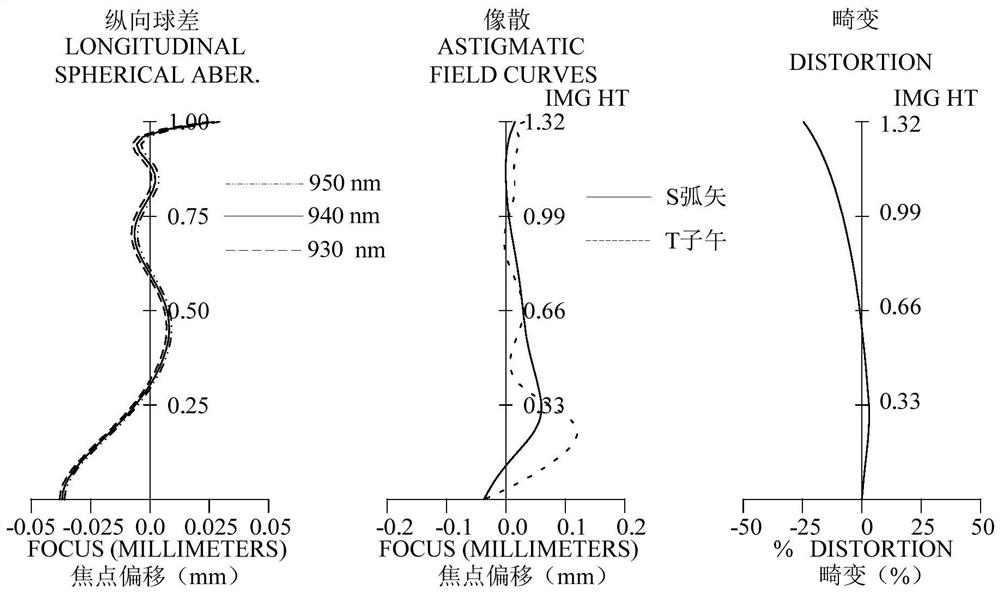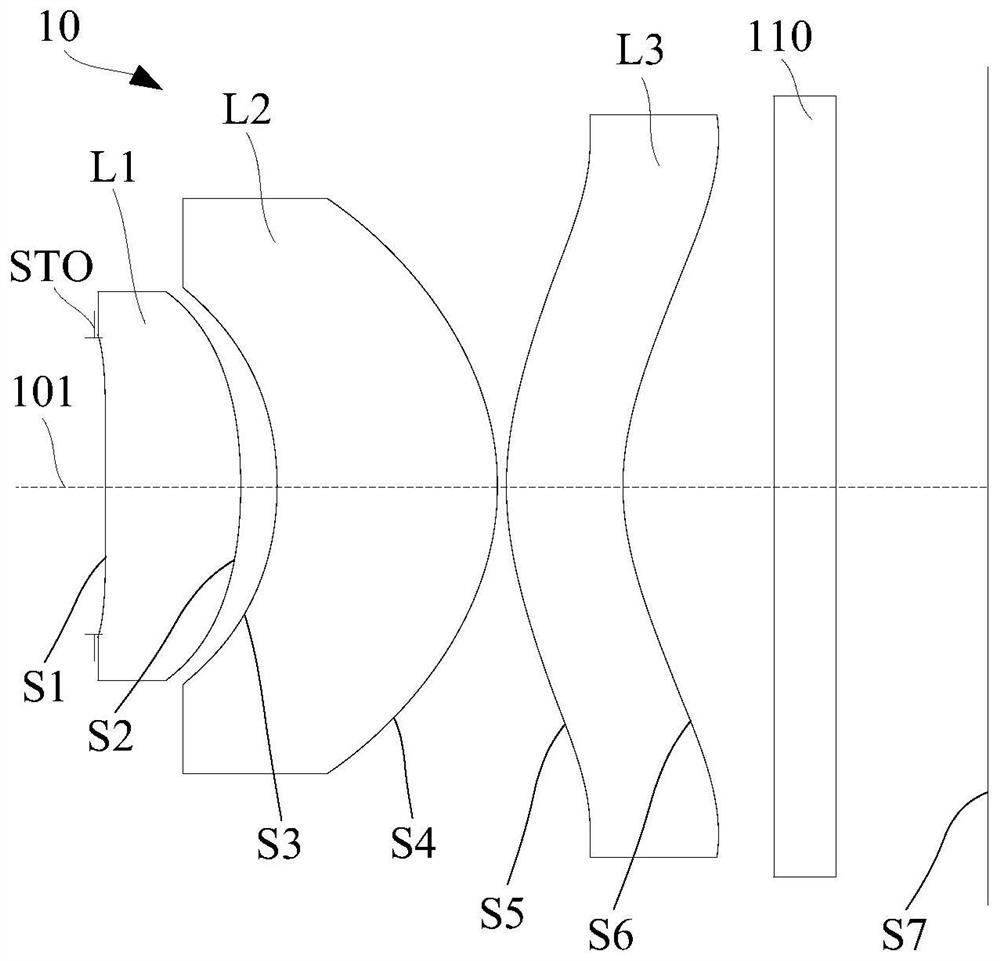Infrared optical system, infrared receiving module and electronic equipment
An infrared optical system and module technology, applied in optics, optical components, instruments, etc., can solve problems such as difficulty in meeting high-precision detection requirements, low imaging brightness, and difficulty in meeting market demand for module detection performance
- Summary
- Abstract
- Description
- Claims
- Application Information
AI Technical Summary
Problems solved by technology
Method used
Image
Examples
no. 1 example
[0083] refer to figure 1 , in the first embodiment, the infrared optical system 10 includes an aperture stop STO, a first lens L1 with positive refractive power, a second lens L2 with positive refractive power, and a second lens L2 with positive refractive power along the optical axis 101 from the object side to the image side The third lens L3 with negative refractive power. Each lens surface type of optical system 10 is as follows:
[0084] The object side S1 of the first lens L1 is convex at the near optical axis, and the image side S2 is convex at the near optical axis; the object side S1 is concave near the maximum effective aperture, and the image side S2 is convex near the maximum effective aperture .
[0085] The object side S3 of the second lens L2 is concave at the near optical axis, and the image side S4 is convex at the near optical axis; the object side S3 is concave near the maximum effective aperture, and the image side S4 is convex near the maximum effective ...
no. 2 example
[0106] refer to image 3 , in the second embodiment, the infrared optical system 10 includes an aperture stop STO, a first lens L1 with positive refractive power, a second lens L2 with positive refractive power, and a second lens L2 with positive refractive power along the optical axis 101 from the object side to the image side The third lens L3 with negative refractive power. Each lens surface type of the infrared optical system 10 is as follows:
[0107] The object side S1 of the first lens L1 is convex at the near optical axis, and the image side S2 is convex at the near optical axis; the object side S1 is concave near the maximum effective aperture, and the image side S2 is convex near the maximum effective aperture .
[0108] The object side S3 of the second lens L2 is concave at the near optical axis, and the image side S4 is convex at the near optical axis; the object side S3 is concave near the maximum effective aperture, and the image side S4 is convex near the maxi...
no. 3 example
[0120] refer to Figure 5In the third embodiment, the infrared optical system 10 includes an aperture stop STO, a first lens L1 with positive refractive power, a second lens L2 with positive refractive power, and a second lens L2 with positive refractive power along the optical axis 101 from the object side to the image side in sequence The third lens L3 with positive refractive power. Each lens surface type of the infrared optical system 10 is as follows:
[0121] The object side S1 of the first lens L1 is convex at the near optical axis, and the image side S2 is convex at the near optical axis; the object side S1 is concave near the maximum effective aperture, and the image side S2 is convex near the maximum effective aperture .
[0122] The object side S3 of the second lens L2 is concave at the near optical axis, and the image side S4 is convex at the near optical axis; the object side S3 is concave near the maximum effective aperture, and the image side S4 is convex near...
PUM
| Property | Measurement | Unit |
|---|---|---|
| angle | aaaaa | aaaaa |
| optical path length | aaaaa | aaaaa |
Abstract
Description
Claims
Application Information
 Login to View More
Login to View More - R&D
- Intellectual Property
- Life Sciences
- Materials
- Tech Scout
- Unparalleled Data Quality
- Higher Quality Content
- 60% Fewer Hallucinations
Browse by: Latest US Patents, China's latest patents, Technical Efficacy Thesaurus, Application Domain, Technology Topic, Popular Technical Reports.
© 2025 PatSnap. All rights reserved.Legal|Privacy policy|Modern Slavery Act Transparency Statement|Sitemap|About US| Contact US: help@patsnap.com



